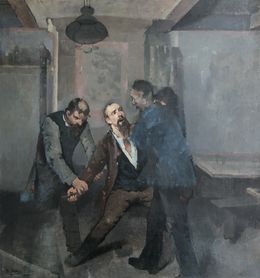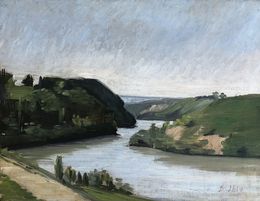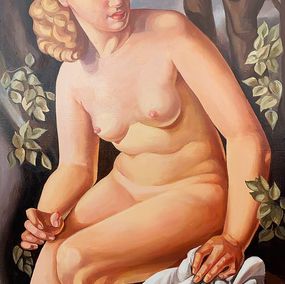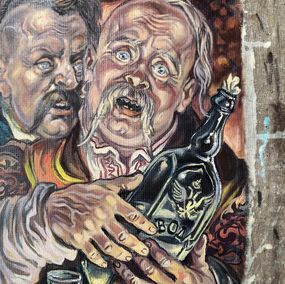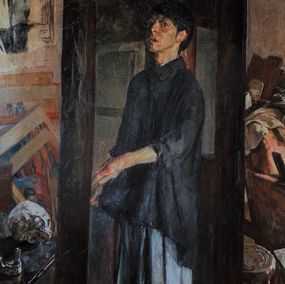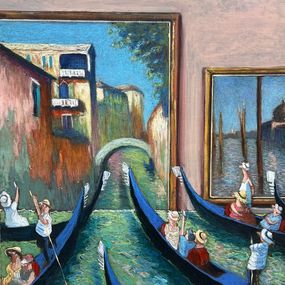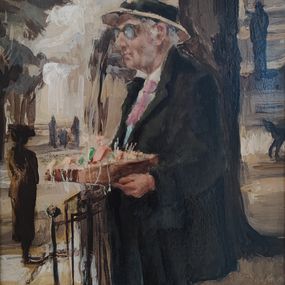
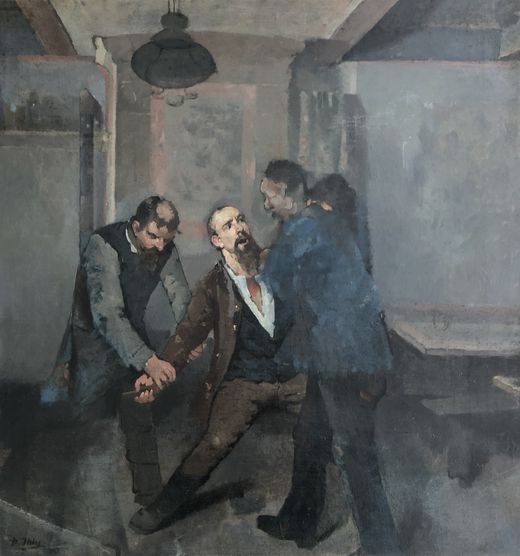
Biography
Jean Daniel Ihly was born in 1854 and died in 1910 in Geneva.
Painter of landscapes, genre scenes and figures. An important representative of exterior painting after Barthélemy Menn, whose student he was
Daniel Ihly came from a modest family. His father was a tailor from the Grand Duchy of Baden and his mother from the Ardèche. The couple became bourgeois in Geneva in 1851. Trained as an enameller, Ihly attended the workshop of Barthélemy Menn between 1873 and 1876, where he became friends with Ferdinand Hodler. He then went to Paris, where he hoped to earn a living as a painter-decorator, then shortly afterwards to London, before returning to Paris, where he really began his career as a painter, exhibiting his works regularly from 1882 onwards in France as well as in Geneva. This Parisian stay lasted about ten years. After a period in Florence, he settled in Geneva and taught drawing at the college and the professional school from 1887 until about 1900. Married, he had no direct descendants who survived him, as seems to testify L'enterrement de mon enfant (1884), which is the burial of a newborn child performed according to the Catholic rite. In 1896, he painted twenty-four figures of Swiss people to decorate the pillars of the Palais des Beaux-Arts at the National Exhibition in Geneva; Hodler painted twenty-six more. At this time he also painted decorative panels for the Hotel Beau-Rivage in Geneva, which have apparently disappeared. Despite his relatively favourable reception in France and French-speaking Switzerland, by the end of his life Hodler had gained national recognition in German-speaking Switzerland, notably through exhibitions in Winterthur in 1903 and 1924, in Zurich in 1909, 1910, 1919, 1928 and in Basel in 1910. Since 1917, no personal exhibition has been devoted to him in Geneva.
Ihly belonged to the generation of artists who were adept at painting landscapes in the open air and who trained with Barthélemy Menn at the same time as Ferdinand Hodler. But if Hodler quickly turned away from intimate landscapes in favor of symbolism, Ihly remained faithful to the lesson of Camille Carot learned at Menn's, achieving his greatest successes in this small format genre with the most modest motifs. In terms of content, these works often reflect a feeling of solitude and powerlessness in the face of the course of things: impoverishment of the countryside, rural exodus, human misery, resignation in the face of death. The latter is a recurring theme in the artist's work, whether it appears in portraits of his deceased parents, in funeral scenes such as The Orphans (circa 1900) or in the very singular Anatomy Lesson of 1900.
To the more ambitious compositions suffering from the overwhelming influence of Hodler, as in the Bather, the critics of the time often preferred his silent landscapes animated by distant and fleeting figures. Nevertheless, it is in his genre scenes that Ihly explicitly shows the poverty of field workers, laborers and other small craftsmen in a society in full industrial development. His social commitment can be seen, for example, in the portrait of Louise Michel (1882), a revolutionary communard whom he met in Paris, or in the portrait of progressive intellectuals such as his friend Louis Duchosal (around 1885).





